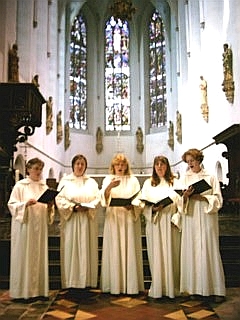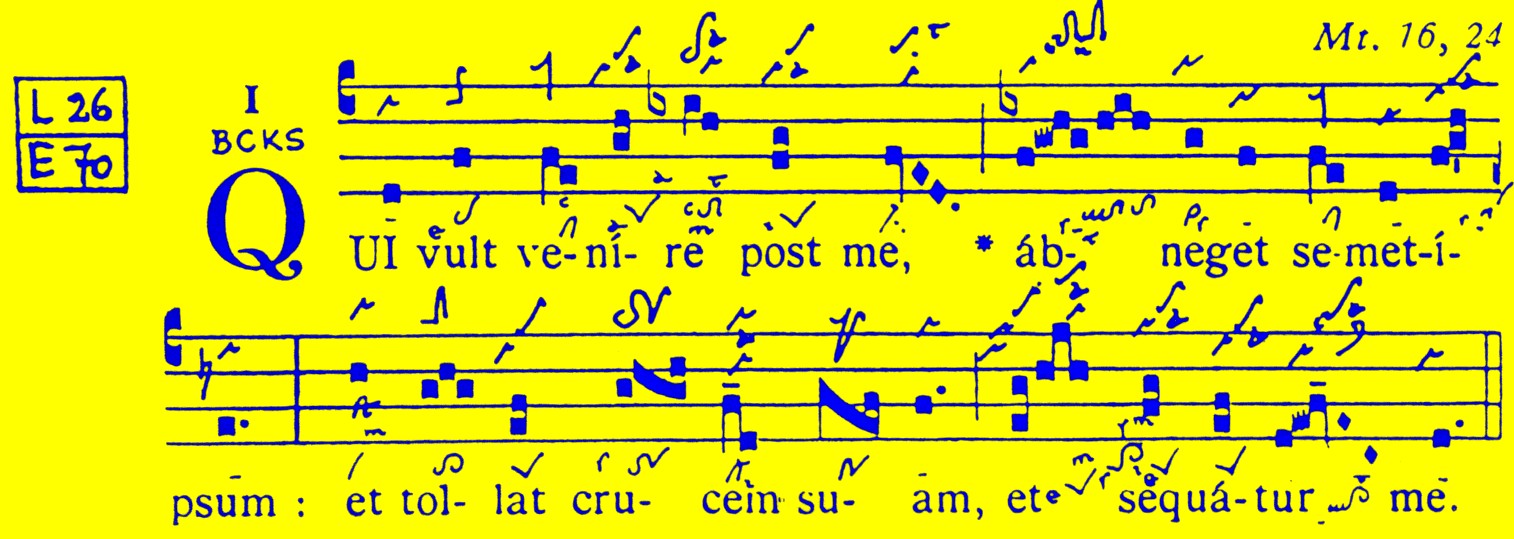
Home
Schola Catharina
Programme
A history of Gregorian Chant
Graduale Triplex
Gregorian Chant today
Contact us
Listen to the Chant
Photos
Graduale Triplex:
Developments in Performance Practice
Gregorian chants first passed on in an oral tradition. Only in the 10th century we see for the first time musical notations appear above the texts (neumes). In later centuries it became a complete music-notation. Unfortunately all sorts of nuances have been lost since then, for the first notations gave mostly dynamic informations, while the later notations gave only the pitch. Thorough musicological research of those oldest manuscripts (semiology) made it possible to recover much of the original dynamic interpretation. Culmination in this development is the publication of the Graduale Triplex in 1978 by the monks of Solemn in France. In this Graduale you find both the new notation on lines (which give mainly the pitch) and two of the oldest notations (which give mainly dynamic informations, length of the notes, etc.).
Below you see an example taken from the Graduale Triplex (on the home-page of the site you can also hear it), the communio-chant 'Qui vult venire'.
Three notations are given:
1. above the four lines-notaion: the 10th century-notation from Laon (France);
2. in the middle: the notation on four lines (which gives the pitch. It is the current notation).
3. under the notation on four lines: a 12th century manuscript from Einsiedeln (Switzerland)

The first notations (in the nineth and tenth century) are written above the texts, whitout lines (in campo aperto). The signs represented groups of notes, without giving the exact pitch of every note.
To give the pitch, lines were introduced in later manuscripts; first one line that gave only one fixed tone, later two, and at the end four lines. One four lines it was possible to give exactly the right pitch.
And, instead of groups of notes in one sign, notation of single notes became more and more usual.
This way of notation made the development of polyphony possible: singing note-to-note (punctum-contra-punctum: contrapunt).
This formed the basis of all Western music.
Home